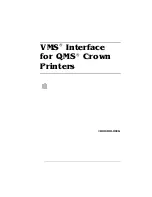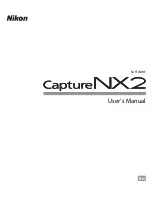
IN
command-file
specifies a command file from which RDFCOM commands are to be read. RDFCOM reads
132-byte records from the specified file until it encounters either the end-of-file mark or an
EXIT command.
If you do not specify the IN option, TACL automatically supplies the name of its current
default input file—usually the terminal from which you issued the RDFCOM command.
Typically, it is very useful to have your RDF configuration commands specified in a text file.
Then you specify this text file as the IN file. RDFCOM then performs the same configuration
each time you use the IN file and this saves you from having to enter all the commands
manually, one line at a time.
Vertical bar (|) is the comment character, if you want to include comment lines in the
configuration file. For more details see,
“Sample Configuration File” (page 360)
.
OUT
output-file
specifies a file to which all output (other than prompts for entering RDFCOM commands) is
to be written. This file might receive listings requested by INFO, SHOW, and STATUS
commands, for example. It might also receive RDFCOM commands generated by the
OBEYFORM option of the INFO command.
If you do not specify the OUT option, TACL supplies the name of its current default output
destination—usually the terminal from which you issued the RDFCOM command.
If you specify a disk file that does not exist, an EDIT file (file code 101) having the name you
specified is automatically created, and RDFCOM output is directed to it. If you specify a disk
file that exists, this must be an EDIT file (file code 101); RDFCOM output is appended to that
file. If you omit the volume or subvolume portions of the file name specifier, the default is
your current volume or subvolume, respectively.
control-subvolume
is the name of the RDF control subvolume on $SYSTEM on the primary and backup systems,
as well as the subvolume on the image trail volumes on the backup system in which the
image trail files reside.
The control subvolume name is the same as the name of the primary system without the
backslash (and with a one-character suffix appended to it, if you included the suffix in the
INITIALIZE RDF command).
If you omit
control-subvolume
, RDFCOM uses the name of the local system as the control
subvolume, without the backslash and with no suffix character appended.
command
is an RDFCOM command. If the command is present, RDFCOM executes it and then
terminates.
NOTE:
You should not specify an IN file as well as a command. If you do, RDFCOM will
execute the command and terminate without ever reading the IN file.
If a command is not present and no input file is specified, RDFCOM displays a right bracket (])
as a prompt for you to enter commands interactively.
Using RDFCOM Interactively
When you use RDFCOM interactively, you conduct a continuous online dialog with it through
a series of prompts, commands, output displays, and messages.
Starting a Session
To start an interactive RDFCOM session, enter the RDFCOM keyword at your TACL prompt,
followed optionally by the name of the RDF control subvolume:
100
Operating and Monitoring RDF
Содержание NonStop RDF
Страница 68: ...68 ...
Страница 186: ...186 ...
Страница 260: ...260 ...
Страница 278: ...278 ...
Страница 284: ...284 ...
Страница 290: ...290 ...
Страница 308: ...308 ...
Страница 322: ...322 ...
Страница 336: ...336 ...
Страница 348: ...348 ...
Страница 464: ...464 ...
Страница 478: ......
















































